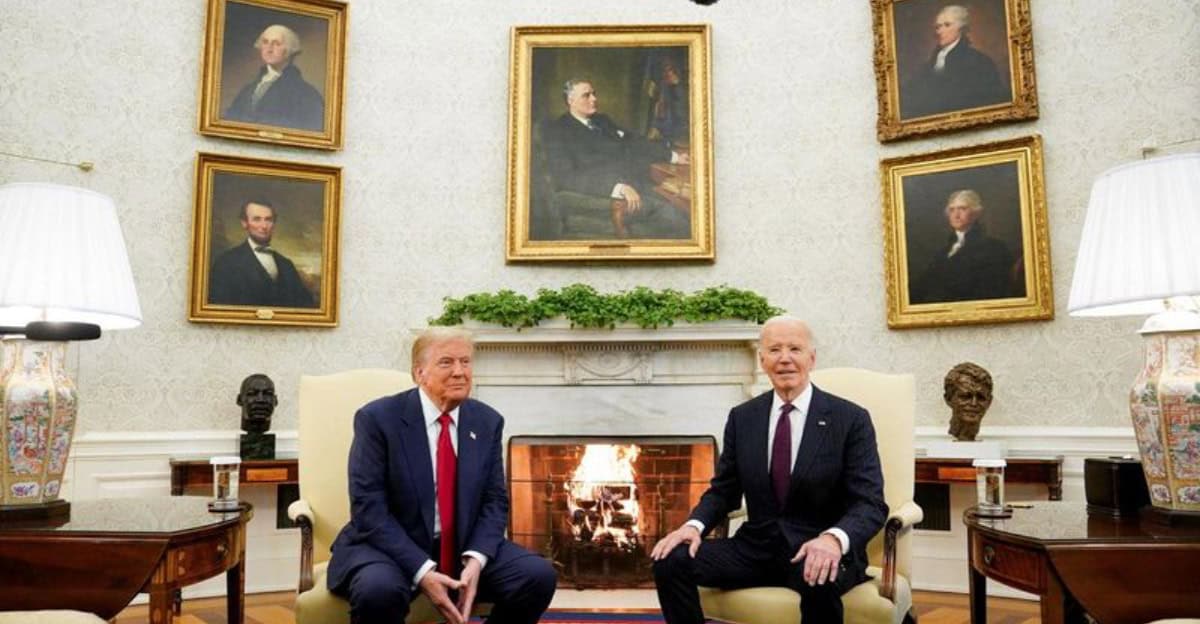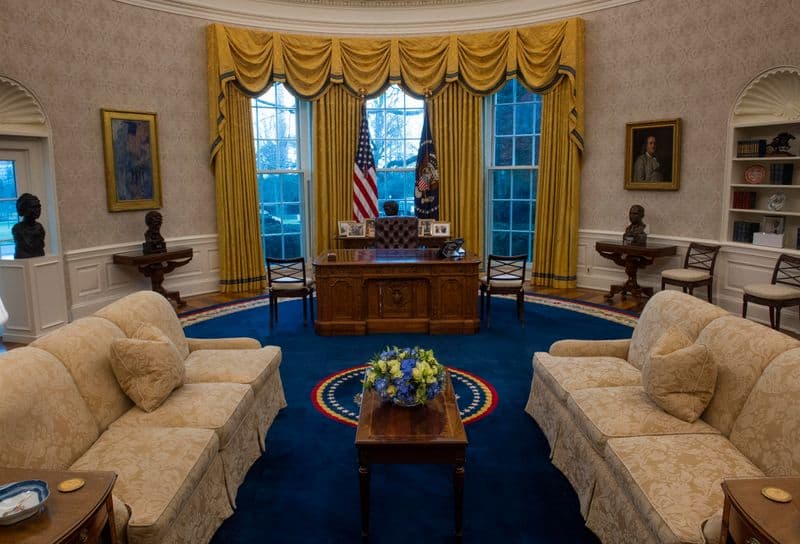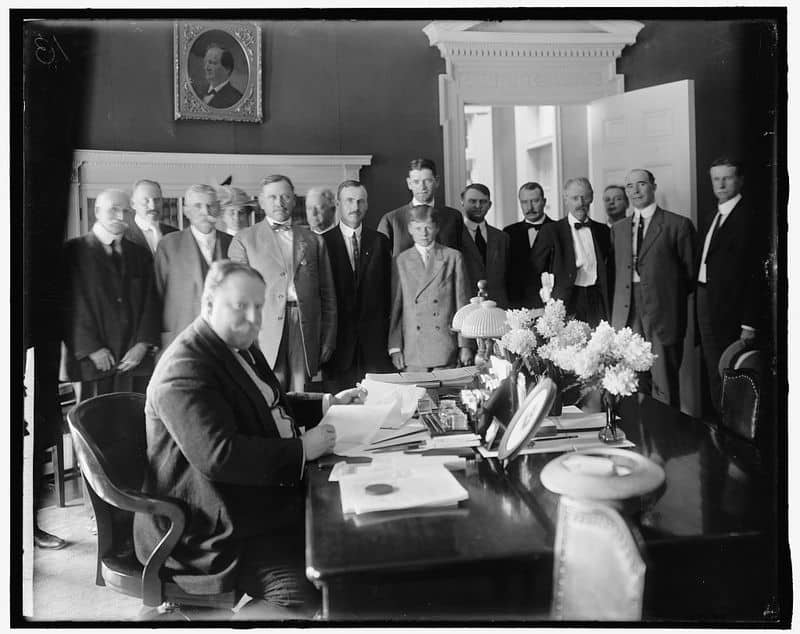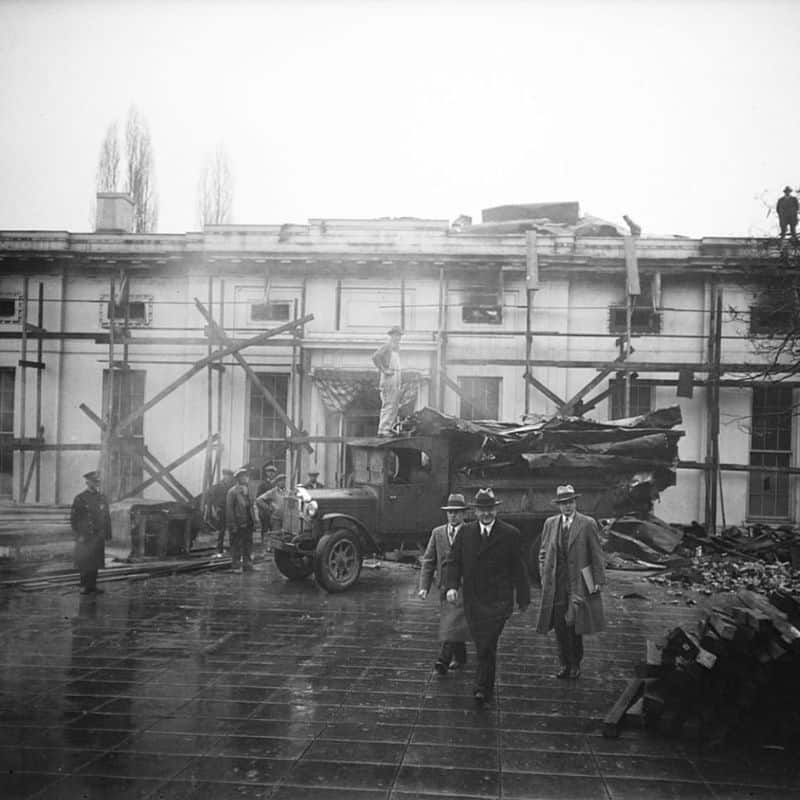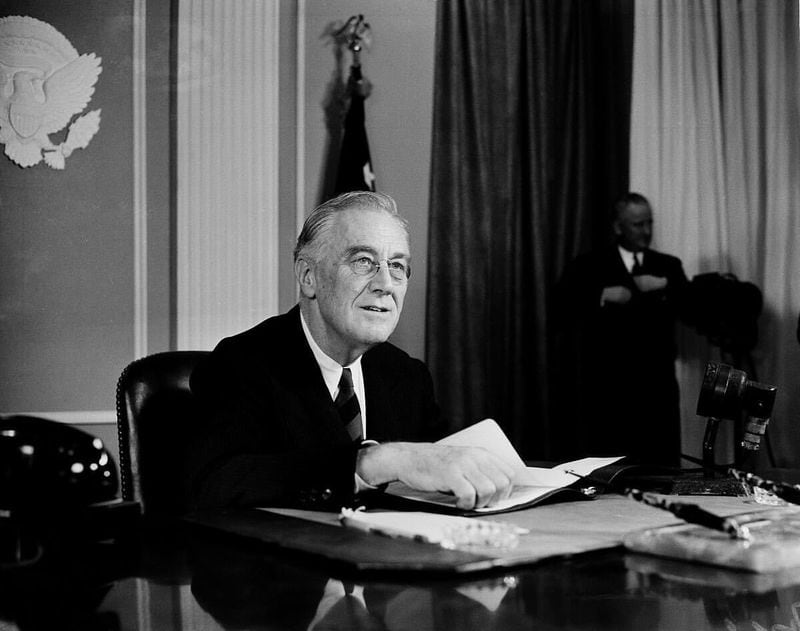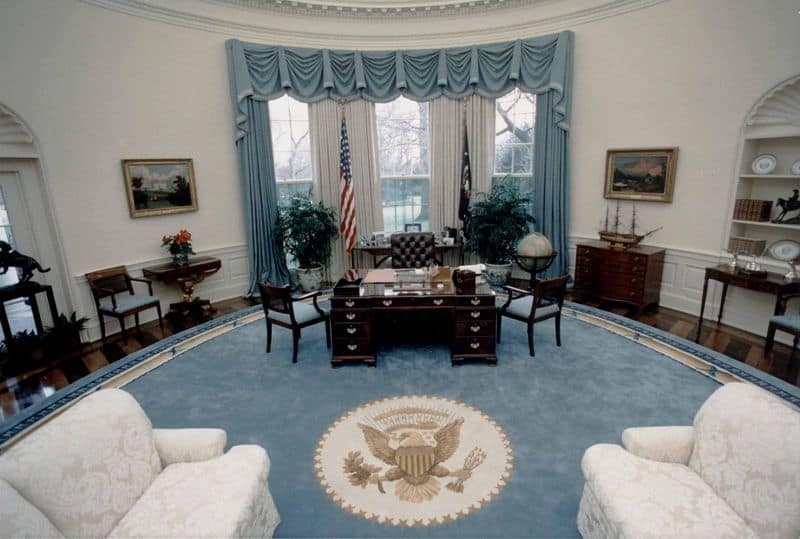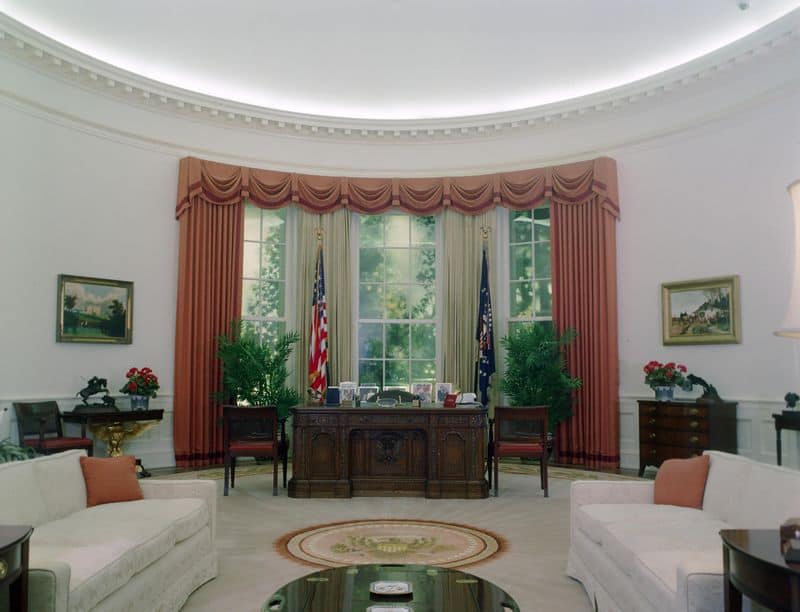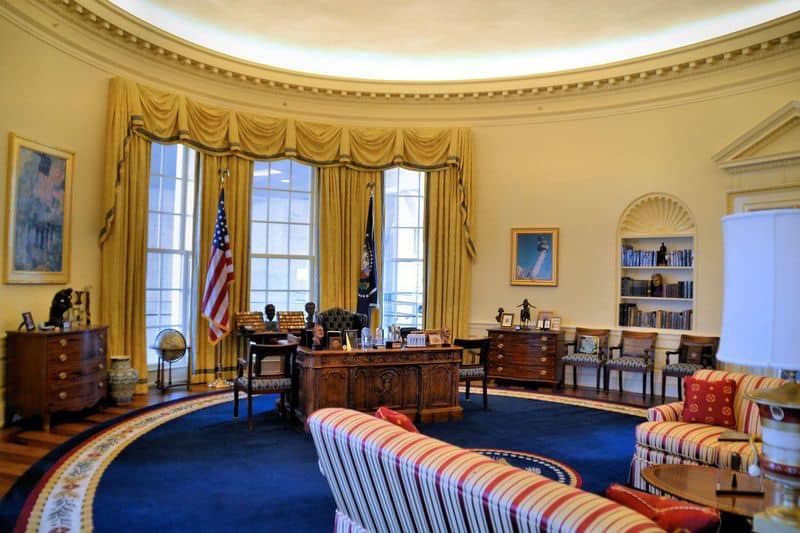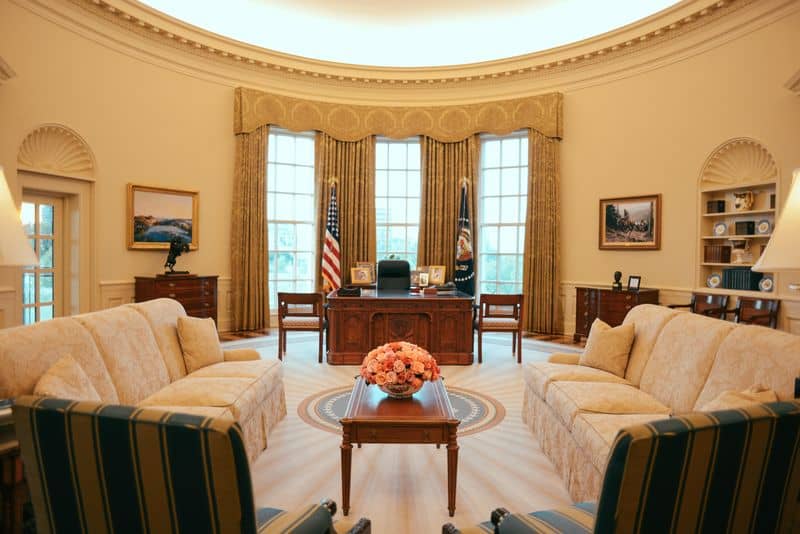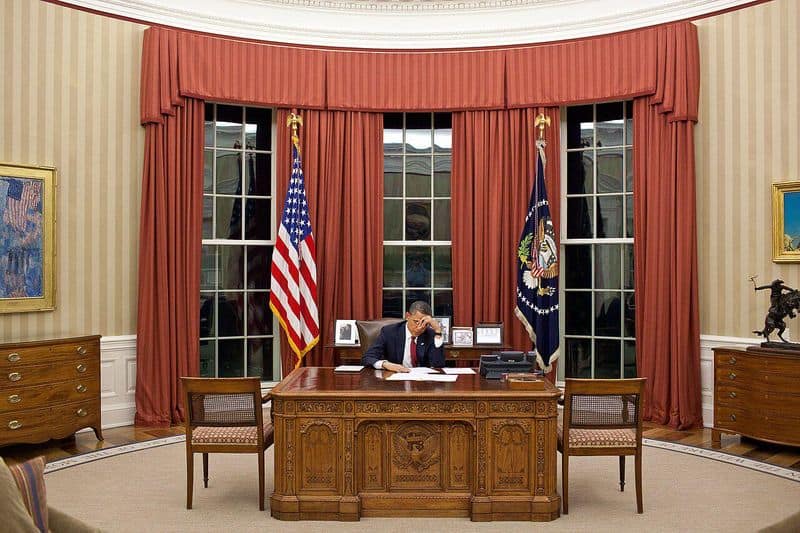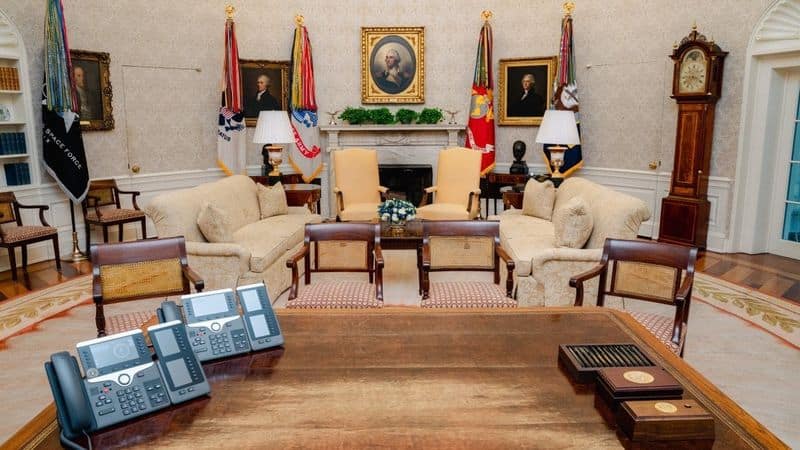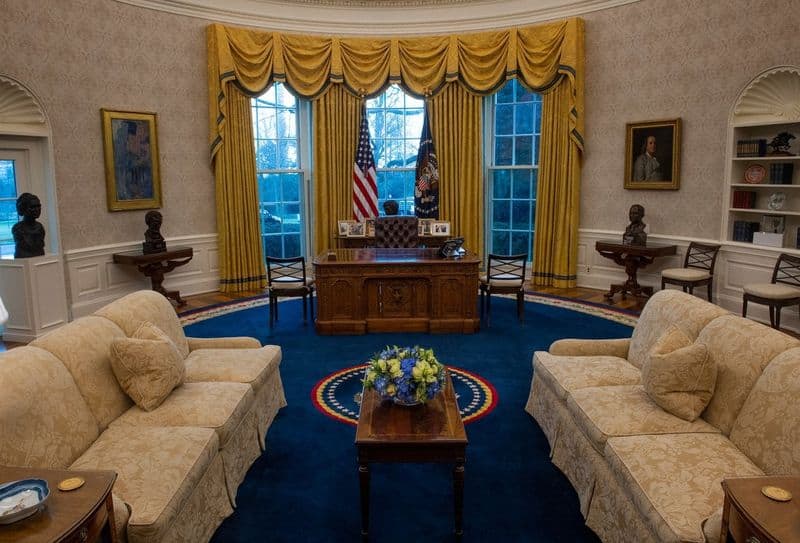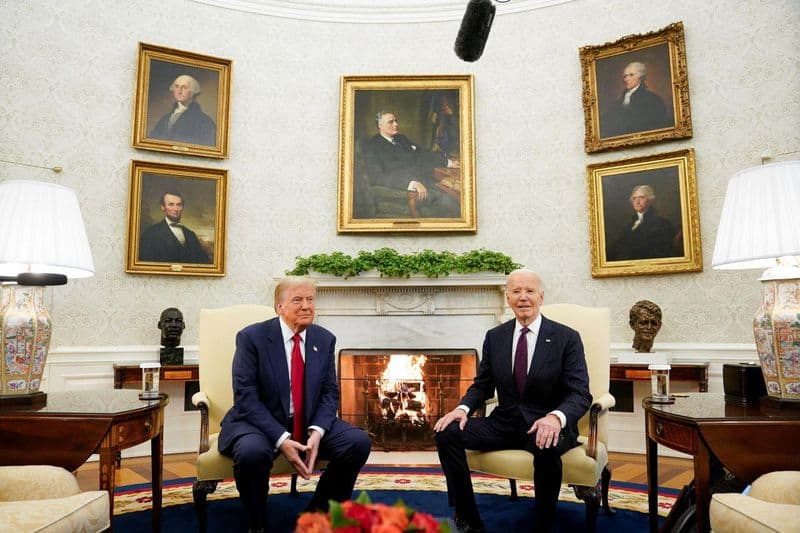The White House has undergone significant decorative changes over the years, reflecting the tastes and styles of different administrations.
1. The Oval Office
The Oval Office is one of the most iconic rooms in the White House, serving as the President’s formal workspace.
Its decor has evolved with each administration, exhibiting the personal tastes and influences of various presidents.
From traditional to modern elements, the room’s furnishings, artwork, and color schemes have seen numerous transformations.
The office often features a large desk, stylish chairs, and the presidential seal on the carpet, providing a regal backdrop for official photographs and meetings.
This dynamic space continues to capture the essence of American leadership and history through its changing decor.
2. It Was First Completed In 1909
In 1909, the Oval Office was first completed during William Howard Taft’s presidency. The design was inspired by the neoclassical style, featuring simple furnishings and a classic layout.
The room’s original decor included subtle colors and modest decorations, reflecting the early 20th-century aesthetic. This setting provided a formal yet accessible space for presidential business, highlighting functionality over extravagance.
As the inaugural version of the Oval Office, it set the stage for future presidents to leave their mark, adapting and enhancing its decor to suit their unique preferences.
3. A Fire in 1929 Destroyed the West Wing
In 1929, a devastating fire severely damaged the West Wing of the White House, including the Oval Office. This unforeseen disaster led to extensive reconstruction efforts under President Herbert Hoover’s administration.
Despite the destruction, this event marked a pivotal moment in the White House’s architectural evolution, paving the way for modern advancements in both design and function.
4. Roosevelt Moved the Oval Office in 1934
In 1934, President Franklin D. Roosevelt moved the Oval Office to its current location in the West Wing’s southeast corner. This relocation was part of a broader effort to modernize the White House and improve its functionality.
Roosevelt introduced Art Deco influences into the room’s design, blending contemporary style with traditional elements. This redesign provided a fresh, updated atmosphere befitting the dynamic political climate of the time.
The new setting enhanced both the aesthetic appeal and operational efficiency of the Oval Office, reflecting Roosevelt’s forward-thinking approach to presidential space.
5. George H.W. Bush Added a Rug
During George H.W. Bush’s presidency, a new custom rug was introduced to the Oval Office. Aged 67 at the time, Bush opted for a design that emphasized elegance and tradition.
The rug featured a soft blue color with the presidential seal prominently displayed at its center. This addition complemented the room’s existing decor, enhancing its classic and sophisticated ambiance.
Bush’s choice reflected his appreciation for timeless style, ensuring that the Oval Office maintained its iconic status while showcasing the personal touch of his administration.
6. Nancy Reagan Replaced It
First Lady Nancy Reagan took an active role in redecorating the White House, which included replacing the Oval Office rug.
The new rug featured a bright motif, adding a touch of warmth and energy to the room. This change was part of Nancy’s broader initiative to refresh the White House’s aesthetic, aligning it with contemporary tastes.
Her influence extended beyond mere decoration, reflecting the cultural shifts and social dynamics of the 1980s.
7. Bill Clinton Put in New Drapes and a New Rug
Bill Clinton, during his presidency, made notable changes to the Oval Office’s decor. He introduced new drapes and a fresh rug, imbuing the room with a modern and personable style.
The drapes featured a refined pattern, while the rug offered a subtle yet sophisticated design. These updates reflected Clinton’s focus on creating an inviting and approachable atmosphere for visitors.
His choices successfully balanced tradition with innovation, mirroring the progressive and dynamic nature of his administration’s policies.
8. George W. Bush Was a Victim of Beige
George W. Bush opted for a more conservative and subdued approach to the Oval Office decor. The use of beige tones dominated the room, creating a calm and neutral environment.
The choice of color and furnishings reflected Bush’s preference for simplicity and tradition. While some viewed it as understated, others appreciated the classic and timeless quality it conveyed.
This decor decision underscored Bush’s commitment to maintaining a sense of continuity and consistency within the presidential office.
9. President Obama Liked Red Curtains and Striped Wallpaper
Barack Obama introduced a modern and bold design to the Oval Office during his tenure. He selected red curtains paired with striped wallpaper, creating a vibrant and dynamic atmosphere.
This choice symbolized Obama’s progressive vision and willingness to embrace change. The decor reflected his administration’s themes of innovation and forward-thinking.
His selections resonated with a sense of optimism and energy, offering a fresh perspective on presidential decor that inspired many.
10. Trump Rummaged Through the Attic
Donald Trump approached the Oval Office decor with a nod to the past. He selected gold curtains used during Clinton’s era, Reagan’s rug, and a portrait of Andrew Jackson, showcasing his eclectic tastes.
This fusion of elements from different presidencies highlighted Trump’s appreciation for historical significance. His choices created a unique blend of styles that emphasized both continuity and individuality.
Each piece carried its own narrative, weaving together stories from previous administrations into a singular, cohesive decor.
11. Biden Replaced the Portrait
Joe Biden made his mark on the Oval Office decor by replacing Andrew Jackson’s portrait with a new selection. This change was symbolic of Biden’s commitment to inclusivity and progress.
The portrait chosen reflected values aligned with his administration’s goals, emphasizing diversity and unity. This decision underscored Biden’s intent to foster a welcoming and forward-thinking environment.
His approach to decor reinforced the broader themes of his presidency, highlighting the importance of representation and innovation in leadership.
12. Trump Got His Portrait Back
Now, Andrew Jackson’s portrait is reinstated in the Oval Office. Trump views this as a nod to tradition and historical continuity.
This decision reflects his admiration for Jackson’s leadership and the values he represented. The portrait serves as a symbolic connection to past presidential legacies, aligning with Trump’s vision of strong leadership.
The reinstatement is a testament to Trump’s focus on honoring and preserving historical narratives within the framework of contemporary governance.

